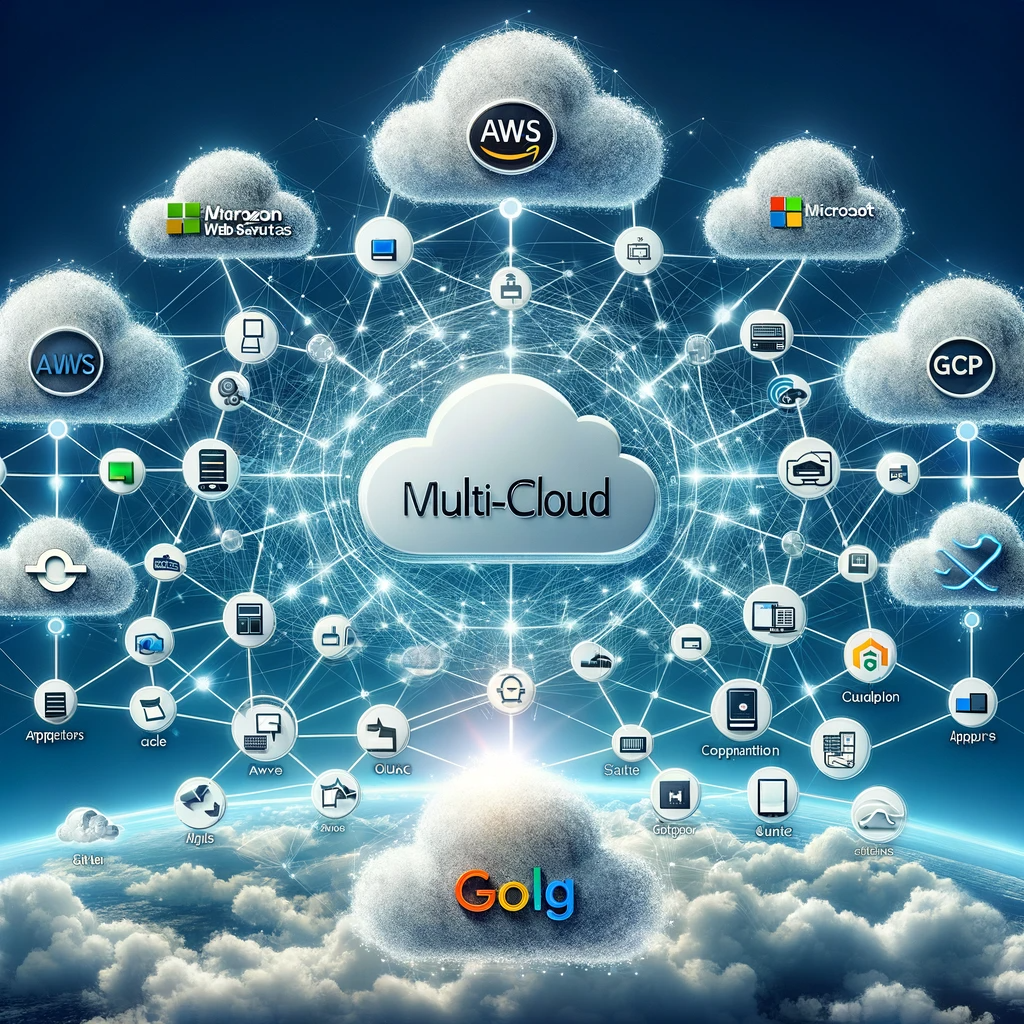
Multi-cloud technology refers to the use of advanced artificial intelligence (AI) to provide multiple cloud computing and storage services in a single heterogeneous architecture. This approach enables organizations to distribute their cloud assets, software, applications, and more across several cloud environments. By using multiple cloud services, such as Amazon Web Services (AWS), Microsoft Azure, Google Cloud Platform (GCP), and others, companies can leverage the unique advantages that each platform offers.
The multi-cloud providers like AWS, Azure, and GCP have data centers located across the globe. AWS, for instance, has regions in North America, South America, Europe, Asia, and Australia, allowing for widespread service coverage. Azure and GCP also follow a similar global distribution, ensuring their services are accessible worldwide and providing redundancy and reliability.
Both small and large companies are increasingly considering a multi-cloud approach due to several compelling reasons:
- Risk Mitigation: By diversifying their cloud services, companies can avoid vendor lock-in and reduce the risk of service outages or data loss.
- Compliance and Data Sovereignty: Different countries have different data privacy laws. Multi-cloud strategies allow businesses to store data in specific regions in compliance with local regulations.
- Cost-Effectiveness: Each cloud provider has unique pricing models and strengths. By using multiple providers, companies can optimize costs based on their specific needs.
- Customized Solutions: Different providers excel in different services, allowing companies to choose the best provider for each specific task or service.
Before migrating to cloud technology, companies should:
- Assess their Requirements: Understanding the specific needs, such as storage capacity, computing power, and specific cloud services.
- Plan for Security and Compliance: Ensure that the cloud solutions meet the necessary security standards and comply with relevant data protection regulations.
- Skill and Resource Assessment: Evaluate if the current team has the skills required for cloud management or if additional training or hiring is necessary.
- Cost Analysis: Understand the pricing models of different providers and how they align with the company’s budget and usage patterns.

Comparing multi-cloud providers, one can see that:
- AWS is known for its vast array of services and global reach, but it can be complex and expensive for certain use cases.
- Azure integrates well with Microsoft products and offers strong support for hybrid cloud environments, but its interface can be less intuitive for users not familiar with Microsoft’s ecosystem.
- Google Cloud Platform excels in data analytics and machine learning services but has a smaller global footprint compared to AWS and Azure.
The future of multi-cloud technology is promising, as it is becoming increasingly integral to enterprise IT strategies. The trend is toward even more flexibility, better data management tools, and enhanced services that cater to specific industry needs. With advancements in AI and machine learning, multi-cloud environments will likely become more automated and intelligent, offering even more tailored solutions to businesses. As the technology matures, we can expect a greater emphasis on seamless integration among different cloud platforms, enhancing efficiency and user experience.
